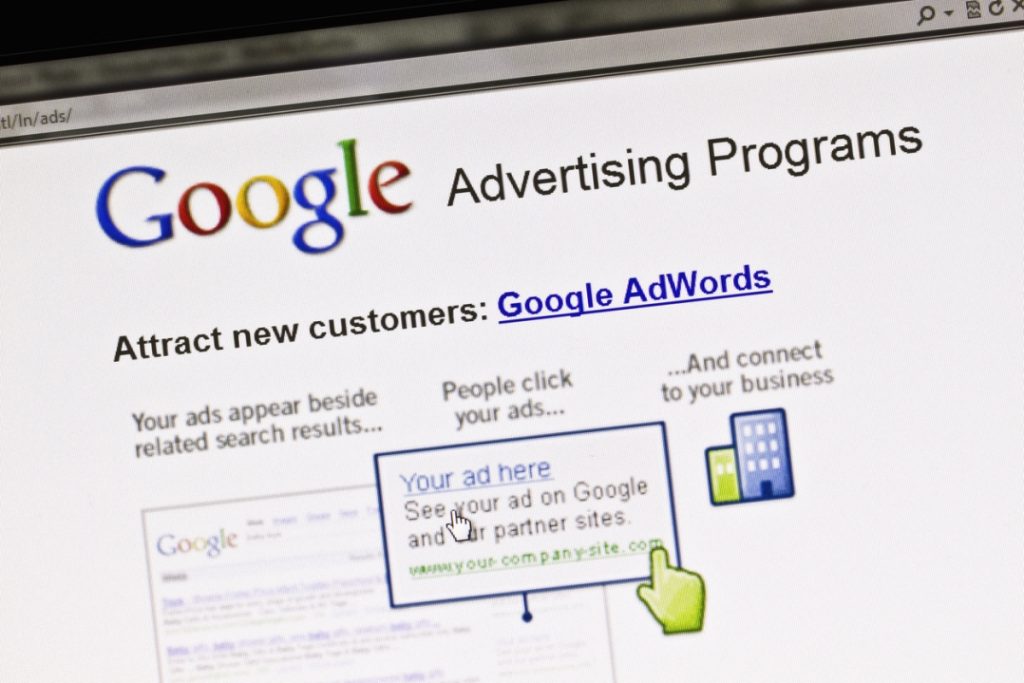
Last week we took a deeper look at how marketing automation works, with a focus on automated Google Ad types. We are going to continue looking at marketing automations in Google Ads this week, but we will be focusing on the biggest one of all for B2C eCommerce businesses; Google Shopping.
We will also highlight some of the limitations of Google Shopping and why you need to keep an eye on what your Google Ads account does by default.
Are you ready? Let’s go…

Google Shopping & Remarketing
Google Shopping and Remarketing are two must haves in a B2C eCommerce digital marketing toolbox.
But what are they? Before we dig into the automations and how they are connected, we need to look at what they are.
What Is Remarketing?
Remarketing (sometimes known as behavioral retargeting) serves targeted digital advertisements to people who either visited your site or took an action on your site. Remarketing is often used to bring back users who have abandoned their “carts” before making a purchase.
What Is Google Shopping?
It’s almost certain that you would have run into Google Shopping ads at some point. Google Shopping is used by huge numbers of B2C eCommerce sites and even C2C marketplace style sites to promote products in Google Search.
Google Shopping lets users search for, view and compare products all from Google. The shopping ads you may have seen appear at the top of search results pages for product queries, like for example “iphone cases”. For full shopping results you would click on the “shopping” tab in search.
Google Shopping can be an automated process once the initial leg work has been completed. If you want to get started on Google Shopping and Google Shopping ads you’ll need the following:
- A Google Merchant Center account
- A product feed
- A Google Ads account (if you want to push out shopping ads)
With a product feed you can sign up to Google Shopping for free. If the feed is regularly updated this will let users come to your site from Google shopping to complete their purchases. There are different levels of functionality here. You can connect your merchant center account with third-party review platforms or Google Customer Reviews to promote more trust in your brand. You can even include specific promotions in your feed.
Full feed specifications are available from Google.

Google Smart Shopping Ads & Dynamic Remarketing
If you want to get involved in the automations available in Google Shopping Ads, you really need to spend some time thoroughly optimizing your Google Shopping feed. This saves time further down the line and will make your automated smart shopping ads and dynamic remarketing more effective.
The Shopping Feed
A properly optimized shopping feed gives Google the signals it needs to place your product in front of users for relevant queries. It is not vastly different to SEO. For anything to work you have to give good information to Google so it has something to work with.
If you are planning on creating a shopping feed, here are some tips to help you:
- Include important attributes in product titles – You need to provide customers with the best possible information about your product. This will help Google to match it with relevant search queries.
- Put key details at the front of the title – Google tends to truncate longer titles, so get your most important product information right at the front.
- Use high quality images – This is vital. Better images get better click through from users. If you are paying for shopping ads with poor images you are probably wasting your money,
- Do NOT use placeholder or promotional images – The feed should be saving you time, if you have to maintain it using lots of promotional images you will not be saving time.
- Use the same titles and descriptions in your shopping feed as you do on your website – If these do not match it can lead to users leaving your site. Different messaging is confusing for customers.
Now you have a feed, it’s time to look at Smart Shopping ads.

Smart Shopping Ads, Automation and Performance Max
You have an optimized product feed in your Google Merchant Center. So you might be tempted to dip your toe into Smart shopping ads. Luckily there are lots of automation options that you can take advantage of. But, as always, you need to watch what you are automatically opted into.
What are the benefits of Smart Shopping campaigns?
If you have uploaded an optimized product feed Google can then use that information to create and serve ads across different Google networks. This includes the Google Search Network, the Google Display Network, YouTube and Gmail.
Google’s systems test different combinations of the text and images you provide, including from your product feed. They then select and show the most relevant ads automatically. In the old days this would have been a manual operation (and there is still a time and place for that if you want to save budget) so it saves a huge amount of time.
With Smart Shopping you can also utilize automatic bidding. So rather than managing bids across a huge array of products you can automate bidding for maximum conversion value that works for your budget. It is STILL important to keep an eye on what you are spending money on. With automated bidding there is always a risk you might be spending money on ads for a query where you have no relevance. For example if one of your products has the same name as a famous song it might appear for queries related to that song’s title. Which will cost a fortune and will return no value.
Smart Shopping also integrates well with third-party platforms like Shopify or WooCommerce. So you will have full access to your data at every touchpoint.
You can create lots of smart shopping campaigns in your Google Ads account. Around 100 enabled or paused campaigns, to be precise. But you should consolidate them where possible.
If you also have very tight controls around your brand you really need to keep a close eye on the automated ads you display.
Performance Max
Performance Max is another level of automation that is related to Smart Shopping campaigns. In 2022, all Smart Shopping campaigns will be upgraded to Performance Max campaigns by default. This does not mean that Smart Shopping is being phased out (yet). But it’s getting some new functionality and automations that should, in theory, make everything easier.
Performance Max is essentially Google’s omnichannel ads product. You can unlock access to all of Google ad surfaces (YouTube, Display, Search, Discover, Gmail and Maps) in a single campaign with a product feed. This level of automation will save the vast majority of digital marketers a HUGE amount of time.
It also makes a lot of sense. Users move across many different apps and services in the purchase funnel, having one interface to deal with all of them is just a logical step. It also integrates well with Google’s moves in organic search, where Google’s MUM AI can understand information from text, images and (eventually) audio/video.
Performance Max is available for new campaigns and you will be able to upgrade existing Smart Shopping campaigns later in the year.
Dynamic Remarketing
Dynamic remarketing works with the product data you uploaded in Google Merchant Center and your remarketing list. Your remarketing list will allow you to target users who have visited your website in the past.
With Google Shopping you can take this a step further and serve automated dynamic remarketing ads. These ads will contain specific product information that is tailored to your customer’s activity on your site.
Remarketing is generally a high conversion/low spend tactic for most eCommerce businesses. Combined with Smart Shopping’s automation you can reach a lot of people very quickly, at scale.
It is probable that this will all be folded into Performance Max. Which will be the one stop shop for all your ad automation needs pretty soon! But you should be cautious. If you want strict control of your messaging this level of automation can cause problems. But if you setup the campaign correctly, you can avoid these issues.

App Install Ads
If you are in eCommerce you might have an app and you might want to push more people to download your app. This is where App Install Ads come in! They also have some automations involved that make things a lot easier.
An App Install campaign can appear across all the major Google surfaces, including the Google Play. You can add some ad assets including 4 independent lines of text copy, up to 20 images and other creatives like YouTube hosted videos. Google’s systems will then “mix and match” similar to display campaigns, optimizing to then serve the best and most relevant combinations to different users.
If you have an app that works with your eCommerce site you can run App Install ads to users that may have made a purchase with you, but not downloaded your app. This will then increase the efficacy of the personalized experiences you can serve to all your customers.
The ad automations described above and in part 2 of our series help you save time. They also help you increase acquisition. But they also feed into your wider customer experience strategy. Providing exceptional customer experiences at every touchpoint, wherever the customer is, will only become more important in 2022. With good application, Marketing automation will provide consistency, from your ads to your emails.

Talk to MAQE
If you need help setting up your Google Shopping campaign and optimizing it for success, talk to MAQE via [email protected]. We can help you plan and implement a campaign that provides great ROAS (return on ad spend) and gives your customers a purchase experience that will engage them, prompting them to come back to you rather than your competitors.
